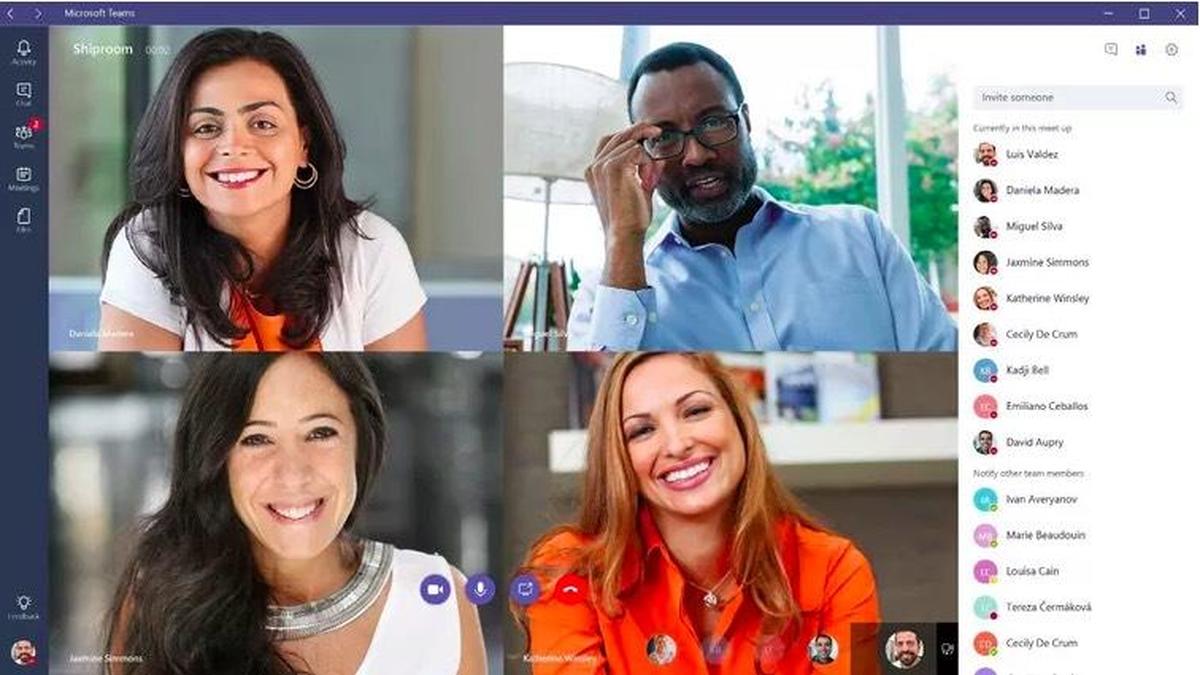This year, my blog focuses on a significant post-pandemic change — more video engagement and collaboration in a hybrid work environment. I already wrote that leaders must communicate, collaborate, and engage effectively in the hybrid workplace to succeed. Last month, I described several reasons why it is challenging to communicate effectively when on camera. Now it is time to share the most practical tip to communicate effectively on camera.

Communicating effectively on-camera is challenging
In case you missed my last blog post. Here is a summary. It is challenging to communicate effectively during a video call. Three reasons explain why this mode of communication can be daunting for leaders. First, you must understand the technology. Technical difficulties will ruin your day if you are clueless. Second, others can see you up close and personal. Some of us (I fall into this category) have a face for radio. Third, it is easy to get distracted, especially if you are on a laptop computer or phone. Trust me — if you are distracted, you can also bet others are.

What can you do to improve your performance on-camera?
Many leaders, including myself, wonder what can I do to improve my performance on-camera? How do I get better at this critical communication skill? The last thing we want to do is look stupid in front of others. We can ill afford a stumbling and bumbling performance. The simple solution to this challenge is practice. The most practical tip I can give you to communicate effectively on-camera is to turn on your camera as much as possible. Don’t hide from this challenge.

It takes twenty hours of practice on-camera to get proficient.
According to Josh Kaufman’s TED talk (viewed over 40 million times) — it takes roughly twenty hours to learn anything new. Communicating live, on-camera is a brand-new skill for many leaders. Before COVID, participating in teleconference calls was more the norm than video teleconference calls. The new normal is here. Leaders are expected to communicate live, on-camera, more than in the past. It is a reality that we leaders all face. Take it head-on by turning on your camera as much as possible so that you can become comfortable communicating during video calls. Start practicing — it will take twenty hours.
People want to see their leaders
Some of you remain unconvinced. You are asking — why in the world should I turn on my camera? You are thinking — I am horrible at communicating via a video camera, and no one wants to see me. Dismiss those thoughts. People want to see their leaders, and you should want that kind of visual interaction with your team, other leaders, and stakeholders. According to several studies, non-verbal communication is as important as verbal communication when engaging others. Body language and facial expressions alone can communicate how you feel about a topic.
The most important thing in communication is to hear what is not being said.
Peter Drucker, leadership expert and management guru
You will get better with practice
Turn your camera on as much as possible. Practice, practice, practice. Based on my own recent experience, you will get better over time. We all know leaders who are awful on-camera. They are nervous, and so is everyone else. It is difficult to watch, much less pay attention to, a leader who cannot communicate well on camera. I bet you he does not practice and does not turn on his camera unless there is no alternative. Some of us are lucky enough to know leaders who are excellent on-camera. She communicates effectively with her stakeholders. Everyone enjoys participating in her meetings. The latter leader will have a distinct advantage over the former in the future. Be that kind of leader — you can do it.

Don’t turn your camera on all the time
Let me finish by pointing out that it is not always appropriate for you to turn on your camera. At times, it is prudent to avoid being “caught on camera” in an awkward situation. Three simple examples come to mind.
- You are in a place full of visual distractions — if you are working from home with your kids or pets running wild nearby. Don’t turn on your camera, unless you want to risk an embarrassing situation.
- You are driving — stay safe on the road. Keep your eyes on the road, not on your phone or laptop. Don’t ever turn on your camera while you are in the car unless it is parked or someone else is driving.
- You are late to the meeting — no one walks into a normal meeting and deliberately causes a major disruption by bringing attention to themselves. Don’t make the same mistake by arriving late with your camera live. Instead, join and decide what makes the best sense.

ATW! is designed to make you a better leader
I hope you join me on this journey to raise up the next generation of leaders. The world is in desperate need of more great leaders. Women and men who lead with confidence, clarity, and creativity. It’s time to become the leader that your world needs. Let’s go All The Way!
